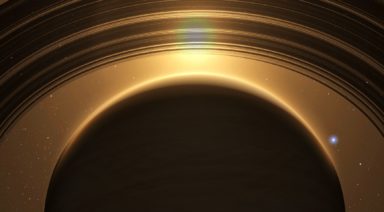YouTube Earthquake Forecaster Predicting With Shocking Accuracy

An online independent forecaster continues to make prescient predictions of future earthquakes using seismic data, Google Earth, and imaging from the recently launched GOES weather satellite.
His predictions have consistently fallen within a 70 to 80 percent accuracy range, correctly predicting the recent spate of earthquakes on the Pacific, from southern Peru to Alaska. His predictions over the next week portend earthquakes shaking locations in the Midwest and northern New York.
Using the pseudonym Dutchsinse, the forecaster’s YouTube videos provide fast-paced walkthroughs of global seismic events with uncanny accuracy. Over the past week he has correctly predicted a multitude of quakes throughout the west coast of North and South America, picking up on evidence from geophysical and tectonic activity to eruptions from volcanoes and fracking operations.
His latest video, in the wake of predicting a 7.9 magnitude in Alaska, as well as a 5.8 magnitude quake in northern California, shows two plumes of steam erupting from locations in Death Valley and the Grand Canyon. Dutchsinse points to these two spots as being isolated, arid, and desolate localities to dispel comments from detractors saying he’s just seeing weather phenomena or controlled burns from farmers.
He also notices that at one point in the day, there appears to be small eruptions of steam across the Midwest. Upon further inspection, he discovers that all of those spots were fracking and oil drilling locations, from which tectonic activity is emitting steam.
Within the next week he expects an earthquake to hit the east coast, an area that rarely sees significant seismic activity. But not to fear (hopefully), Dutchsinse thinks this quake will only be within the 3.0 magnitude range, striking near the border between Canada and northern New York. A quake of this magnitude could be felt within a roughly 100-mile radius from its epicenter.
To add to the intrigue, some have commented that his predictions, which have often trumped those of “professional” seismologists, are being suppressed on YouTube’s view counter. This, he tends to agree with, as well as an occasional off-handed, conspiratorial comment here and there.
We’ll see if his predictions continue to hold up. In the meantime, his channel is updated several times a week with more groundbreaking foresight.
Viktor Schauberger; The Anti-Gravity Water Wizard

Descending from a line of foresters that stretches back more than 400 years, Austrian engineer Viktor Schauberger harnessed the power of nature to create numerous inventions in the early 1900s. Schauberger spent years caring for more than 10,000 hectares of land, during which time he developed a particular reverence for water, studying its all-powerful force and potential.
Though Schauberger refused to attend university — ardently believing it would weaken his intuition and creativity — it was through self-taught studies where he garnered the wisdom, knowledge, and inspiration for his advanced theories and technologies.
What he discovered harkens to the soul of the Gaia principle — that, like Earth, water is a sacred, living organism. But beyond Schauberger’s genius is a human tragedy, engineered by politics and inhumanity, laying to rest what could have been a saving grace for all life on the planet.





































